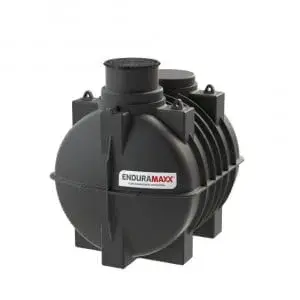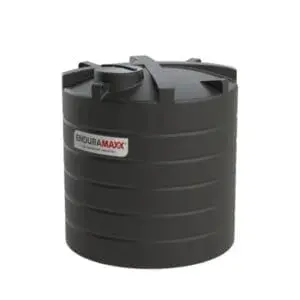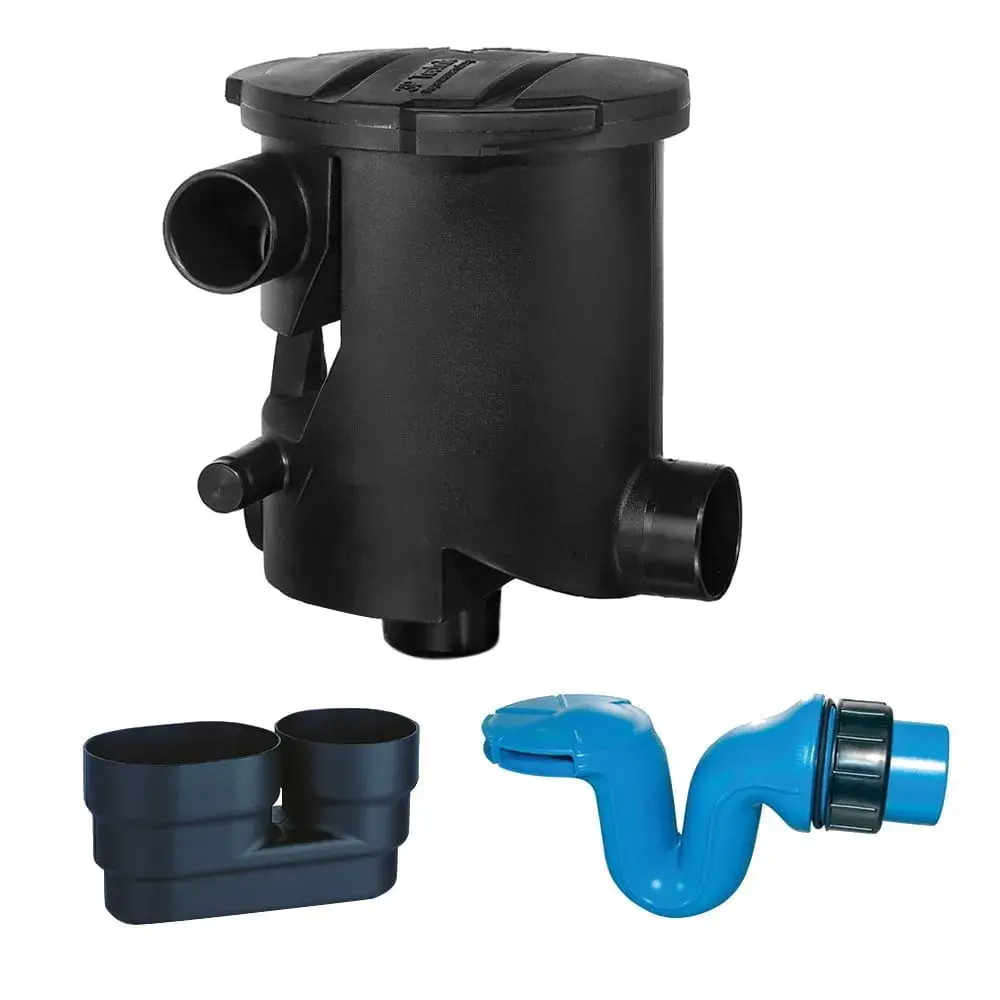Rainwater harvesting for irrigation is seen as a sustainable form of irrigation for both domestic, commercial and for bowling greens and play areas. In its simplest form, rainwater harvesting systems include storage tanks, rainwater filter, and the main top-up. Often a pump is required to move water from the storage tank to irrigation sprinklers and drip irrigation systems.
Above Ground or Below Ground Rainwater Tanks?
Rainwater harvesting tanks are available as above or below ground plastic water tanks. An above-ground tank is regarded as an easier and more lower-cost installation whereas an underground tank can be buried out of sight but will be pump systems. Advantages of these include a much simpler installation than a below-ground tank as fewer plumbing parts are needed when installing this type of tank.
Additionally, gravity can sometimes be used to deliver water to the home for use or link to a rainwater harvesting system for collection which helps reduce costs as well. Above-ground tanks are easier to find a location for and can be moved as situations change.
Above-Ground Rainwater Tanks
Are available from 50 litres to 30,000 lies and can easily be interlinked with linking kits to get larger volumes or storage. Slimline and low-profile horizontal rainwater tanks enable tanks to be sited alongside walls and passageways for domestic installations with a range of rainwater filters to suit every roof size.
Below Ground Tanks
Our below ground tanks are space-saving and avoid having a large space taken up. This is especially important if you live in an area with little lawn space or less-than-ideal storage areas. Additional costs associated with excavation and the associated costs of having professionals install the tank and plumbing.
The water pump will probably be required for below ground tanks will be necessary resulting in additional costs. The Met office has a good rainwater calculator for rainfall statistics online here.
Mains Top Up Systems For When It Doesn’t Rain?
The UK has regular rainfall throughout the year, however during spring and some months the water you use may be more than the capacity of the water tank. We recommend that rainwater tanks are fitted with a part fill main top-up valve for installations. These can be set at 10-90% of the tank’s capacity depending on the buffer of water to keep in the tank.
More details can be seen in the following video. With a mains water top-up, you may come under the regulations of Fluid Category 5 regulations – more details online here
Enduramaxx Rainwater Tanks
These tanks are made from one-piece, rotationally moulded polyethene, meaning there are minimal installation and assembly costs compared to traditional, sectional metal tanks. Plastic water tanks give many years of use without the risk of liners needing replacing over time. Other uses for water harvesting and collecting rainwater included washing machines and flushing toilets. Drinking water tanks are also available for potable water storage and emergency water supplies.
For more details, pricing and fast delivery options of a wide range of tanks and water butts for rainwater harvesting for storing water for irrigation please get in touch today.
Posts By Topics
- Blog (303)
- Chemical Storage Tanks (118)
- Chemical Dosing Tanks (114)
- Chemical Tanks (114)
- Water Tanks (58)
- Rainwater Harvesting Tanks (43)
- Vertical Rainwater Tanks (31)
- Vertical Storage Tanks (31)
- Cone Bottom Tanks (19)
- Conical Cone Tanks (18)
- Rainwater Harvesting (17)
- Water Bowsers (15)
- Horizontal Tanks (14)
- Potable Water Tanks (13)
- Farming (9)
- Case Studies (8)
- Industrial Storage Tanks (7)
- Liquid Fertilser Storage Tanks (6)
- WRAS Approved Potable Tanks (6)
- Wine and Beer Production (6)
- Horizontal Transport Tanks (5)
- Microbrewery (5)
- Rainwater (5)
- Category 5 Break Tanks (4)
- Cider Production (4)
- Mixer Tanks (4)
- Molasses Tanks (4)
- Polyethylene tanks (4)
- Rainwater Filter Kits (4)
- SPECIALIST & BESPOKE TANKS (4)
- Bunded Tanks (3)
- Slimline Tanks (3)
- WRAS Approved (3)
- Clarification Tanks (2)
- Crosslinked Polymer Tanks (XLPE) (2)
- Fertiliser Tanks (2)
- Sump Tanks (2)
- Tank Installation (2)
- Water Butt (2)
- underground water tanks (2)
- ACCESSORIES & FITTINGS (1)
- ATV & UTV SPRAYING UNITS (1)
- Above Ground Effluent Tanks (1)
- Bespoke Tank Frames (1)
- Category 5 Turret (1)
- Caustic Soda Tanks (1)
- Closed Top Bunded Tanks (1)
- Craft beer (1)
- Effluent Tanks (1)
- Enduramaxx (1)
- Ferric Chloride Tanks (1)
- Fire Safety Regulations (1)
- Fire Sprinkler Water Storage Tanks (1)
- Industrial Water Tank (1)
- Open Top Bunded Tanks (1)
- Open Top Cone Tanks (1)
- Open Top Vertical Tanks (1)
- Polyethylene Potable Water Tanks (1)
- Polyvinylidene Fluoride (PVDF) Tanks (1)
- Polyvinylidene Fluoride Tanks (PVDF) (1)
- Pressure Washers (1)
- Pro Series Spot Sprayers (1)
- RWH (1)
- Sodium Hydroxide Storage Tanks (1)
- Sprayer Fill-up Tanks (1)
- Uncategorised (1)
- liquid fertiliser tank (1)
Sign up to the newsletter
enduramaxx.marketing
Related Posts
Craft Brewery Growth in the UK - Enduramaxx Ltd
Craft brewery storage tanks – the popularity of craft beers throughout the United Kingdom has...
How To Deliver 'Perfection' In Sport Pitches
Deliver sports pitch perfection with compost tea brewing tanks – Whether they’re responsible for a...
Why Cone Bottom Tanks Suit Businesses - Enduramaxx Ltd
Why Cone Bottom Tanks are Perfect for your Business – cone bottom tanks provide the best solution...
Related Products
From £1,080.00 inc. VAT
£900.00 exc. VAT
From £1,344.00 inc. VAT
£1,120.00 exc. VAT
From £768.00 inc. VAT
£640.00 exc. VAT
£480.00 inc. VAT
£400.00 exc. VAT





